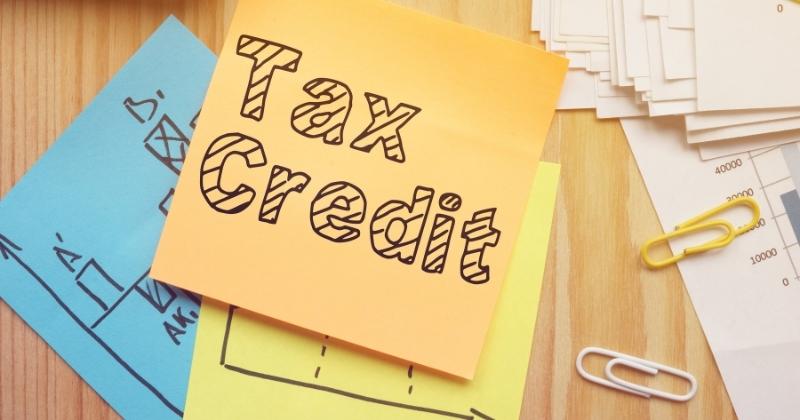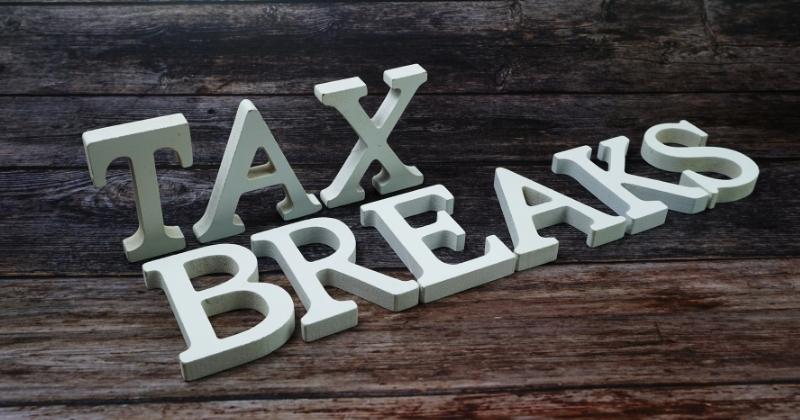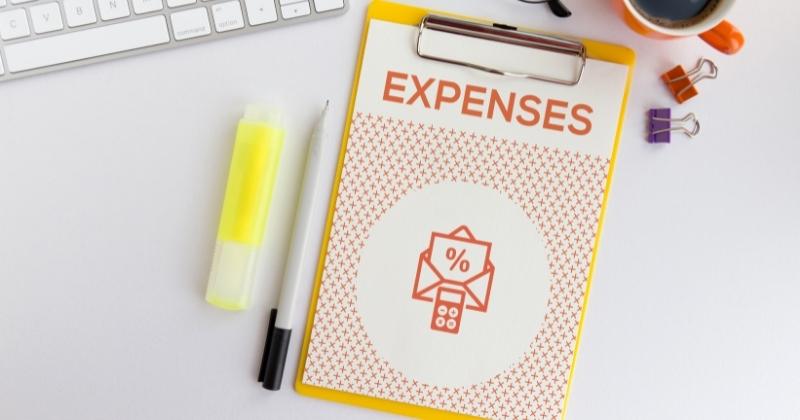Everybody hates taxes, am I right? It doesn’t matter if you are rich or poor, the CRA will come for their piece of your income.
The top 10% of earners in Canada pay 54% of the total income tax, which is actually quite fair compared to the U.S.
After years of preparing my tax returns, finding as many tax breaks as possible is the only thing I’ve seen that makes this financial obligation a bit more bearable.
If you want to learn how to pay less tax in Canada (both personal and business), I hope these tips will help you out.
How To Pay Less Personal Taxes In Canada
There are a number of (legal) ways to pay less tax in Canada. However, relatively few people take advantage of all the credits and deductions that the Canada Revenue Agency (CRA) permits, which can significantly lower your income tax bill. It’s mostly because a lot of people don’t even know where they can save on taxes.
But if you are determined to learn how to pay less income tax in Canada, this article will hopefully identify at least some of the ways which apply to your particular situation. Here’s how to get more money back on taxes in Canada.
1. Child Care Expense

- Summary: If you have children, you can deduct childcare expenses from your tax bill.
- CRA Information Link
If you and your spouse work and no one is home full-time to take care of the child, the chances are that you are paying a lot of money for daycare expenses.
While that’s a necessary expenditure, you can lighten the burden a bit by claiming these expenses on the tax returns. The spouse/parent with the lower income has to claim these expenses on their returns.
You can claim up to $8,000 a year for a child aged seven or younger, and $5,000 for children between seven and sixteen. You can claim daycare, nursery, nanny, caretaker, and boarding school expenses. Make sure you ask for receipts and SIN numbers from these service providers.
How It Works:
- Start an expense spreadsheet and save receipts for child-specific services, such as daycare, schooling, babysitting, etc.
- Claim these expenses on your tax returns to receive a credit. You can deduct up to $8,000/year for children under age seven and $5,000/year for youths between seven and sixteen.
2. Maximize RRSP Contribution

- Summary: RRSP contributions are tax-deductible and can lower your tax bill by thousands of dollars.
- CRA Information Link
Save for your future and contribute to your registered retirement savings plan (RRSP). Not only will your investments grow in a tax-free environment, but you can also lower your investment income tax bill significantly.
However, it’s not purely tax-free, and you will have to pay taxes on it once your RRSP matures, but you can convert it into an RRIF and reduce your tax burden.
The 2023 maximum RRSP contribution is $30,780, or 18% of your income, whichever is lower. See this list for updated numbers.
How It Works:
- If you haven’t done so already, create an RRSP retirement fund.
- Contribute the maximum amount allowed by the CRA, which is a percentage based on your annual income.
- Claim the contribution on your tax returns to receive a tax credit for it.
3. Spousal RRSP Contributions

- Summary: Lower your tax obligations by contributing to a spousal RRSP.
- CRA Information Link
If you are in a higher tax bracket than your spouse, you can maximize your tax break by contributing to a spousal RRSP (within your contribution limit for the year). Your contributions will not affect the available contribution room your spouse or common-law partner has.
Its benefits are two-fold. If your spouse earns less than you and is in a lower tax bracket, they wouldn’t have gotten a tax break as big as yours, even if they fully contributed to the RRSP on their own.
Also, when your spouse finally withdraws from the RRSP (or RRIF), they will be in a lower tax bracket than you and pick up a lighter tax bill.
How It Works:
- Figure out what tax bracket you’re in and how much you need to contribute to potentially lower your tax obligation.
- Donate the surplus amount (up to the CRA’s limit) into your and your spouse’s joint RRSP retirement fund.
- Claim the contribution on your tax returns to receive a tax credit.
Related Reading: Tips on How to Live Frugally in Canada
4. Claim Medical Expenses

- Summary: Several medical expenses that are not covered by your insurance are tax-deductible.
- CRA Information Link
If you or a dependent incur medical expenses that aren’t covered by your insurance, you can claim them on your tax returns and lighten up your tax bill.
This is commonly referred to as the medical expense tax credit.
Many of these expenses, like full-time and specialized care, can be pretty hefty. You can claim the entire amount on your tax returns.
Apart from care, expenses like prosthetics, insulin, insulin pens, hearing aids, eyeglasses, contact lenses, vitamins, etc. For some of these, you need a medical prescription to claim the deductions.
How It Works:
- Save all receipts, prescriptions, and invoices that you receive from non-insured medical costs and expenses. Doctors’ visits, medication, testing, and supplements all count towards this.
- Calculate your total non-covered medical expenses at the end of the year and claim them for a tax credit.
5. Donate Generously (And Smartly)

- Summary: Donations are a non-refundable tax credit and can reduce your tax bill.
- CRA Information Link
Donations help you earn both provincial and federal tax credits, and can help offset your tax bill. You not only get to claim the tax credit on donations for the current year but also claim tax credits for donations up to five years back if you have proof that you donated to eligible entities.
Since it’s a non-refundable credit, you should only use this deduction for years when your tax bill is expected to be higher. A smart move is to donate securities that have accumulated capital gains directly. You won’t have to pay any tax on capital gains, and your tax charitable credit will be a bit higher.
How It Works:
- Find accredited charities and non-profit organizations that offer receipts for your donation. This applies to both material goods (based on the value) and financial sums.
- Make your donation and get a receipt from the organization.
- Save all of your donation receipts and calculate your total charitable donation tax credit at the end of the year.
6. Split Your Pension

- Summary: Splitting a pension with a spouse or common-law partner can reduce your taxable income.
- CRA Information Link
You can split your pension by up to 50% with your spouse, depending on how long you have lived together.
By splitting your pension, the higher tax-bracket spouse can lower their taxable income. You can also split RRIF income in certain circumstances, but the rules are different, and it also depends on your age.
There are different rules for pension splitting if you’re over 65 or under 65, so be aware of the differences.
How It Works:
- Calculate the difference between you and your spouse’s income and figure out what tax bracket that you each fit into.
- Split your pension, so that the spouse in the lower tax bracket receives a higher percentage of the pension.
- You’ll pay less taxes on two smaller pension payments than you would on one large pension payment.
Note that you cannot split:
- Old Age Security (OAS payments)
- Canada Pension Plan (CPP)
- Quebec Pension Plan (QPP)
- RRIF that is transferred to an RRSP, another RRIF or an annuity.
7. Take Advantage Of Employer RRSP Contributions

- Summary: You can claim RRSP contributions from your employer on your taxes to reduce taxable income.
- CRA Information Link
Most major employers in Canada offer a range of benefits to their employees. By taking advantage of these benefits, you may be able to save money on your taxes.
For instance, some employers may offer to match your contribution to your RRSP retirement savings plans. Employers who offer this benefit will typically match your contribution up to 2% to 4% of your annual salary.
This is considered “taxable income” by the CRA, even though your employer is the one making the contribution.
Example: You earn a $100,000 salary per year and allocate $2,000 to your RRSP fund. An employer who matches 2% would contribute $2,000 as well towards your RRSP for the year.
It’s an excellent program if you have it as an option, as it is essentially free money. You can also think of it as making an investment where there is a guaranteed 100% return!
How It Works:
- Ask your employer if they participate in an RRSP matching initiative.
- If so, talk with your company’s HR advisor and explain that you would like to enrol in the program.
8. Transfer Tax Credit To Your Spouse

- Summary: Some federal tax credits can be transferred between spouses
- CRA Information Link
If your spouse or common-law partner has certain tax credits, but their tax obligation isn’t high enough to be cancelled out to zero if they apply all the tax credit towards it, they can transfer the excess to you.
These expenses include tuition, education, textbook amounts, pension amount, disability amount, age amount, and caregiver amount. This can help the high-income spouse offset their tax obligation, resulting in an overall lenient tax burden on the couple.
How It Works:
- Calculate you and your spouse’s tax credits and deductions, or work with an accountant who’s well-versed in tax laws.
- Transfer excess tax credits from one spouse to the individual who needs more tax credits.
- Fill out your CRA tax return accordingly.
9. Claim Disability Expenses (If Applicable)

- Summary: If you are disabled and have medical expenses related to performing your job, they can qualify as a tax deduction.
- CRA Information Link
The disability supports deduction is an incentive offered by the CRA to encourage disabled individuals to maintain careers without having to worry about medical expenses.
Medical expenses that are required to maintain your employment and help you perform work-related duties are typically tax deductible, as long as you can prove that they’re directly related to your career.
The stipulation is that the medical costs must have been paid by the employee during the year. If your employer or another individual is paying for medical costs out of their pocket, then you are not allowed to claim this tax credit.
How It Works:
- Save receipts for any medical expenses or special equipment that are necessary to complete your job or attend job-specific education.
- Claim the receipts on CRA form T929, The Disability Supports Deduction.
10. Deduct Professional Development Expenses

- Summary: Claim professional development courses as a tax deduction
- CRA Information Link
If you want to make the most out of your career, you should invest in yourself and take courses or classes that educate you in your field. In the business world, this is known as professional development.
Often, many employers offer professional development courses to their team or may encourage their employees to attend professional development events.
While some of these courses and classes may be free, the majority of them are not. If you’re paying out of pocket for professional development, there’s a good chance that it qualifies as a tax deduction.
Conversely, if your employer doesn’t offer professional development courses, you may opt to sign up for your own courses.
As long as these professional development courses relate directly to the business and industry that you’re in, then you’re allowed to use them as a tax dedication.
For instance, if you’re working as a financial advisor, then you could take a class on advanced investing strategies and deduct the cost from your taxes.
Note: You aren’t allowed to claim personal education expenses that aren’t related to your industry. If you’re in the manufacturing business and you’re taking side courses in biology, for example, this would NOT be tax deductible.
To claim professional development on your tax deductions, look for CRA form T777, Statement of Employment Expenses. Enter the amount you’ve spent on professional development courses on line 9270.
How It Works:
- Invest in accredited education and professional development courses for your employees.
- Claim all associated education costs on CRA form T777 to receive your deduction.
11. Contribute To RESP

- Summary: Contributing to an RESP account can help you save for your child’s education tax-free.
- CRA Information Link
While an RESP doesn’t lessen your tax obligation right away, it’s a powerful financial tool. Instead of paying for your child’s post-grad education with your taxable dollar, you can contribute to an RESP.
It will still be with your post-tax dollars, but the money in the RESP will grow tax-free. At max, you can contribute up to $50,000 to an RESP, that’s equivalent to $2,500 a year for 20 years.
In the right investment vehicle (that offers 5% returns a year, as an example), it can grow to $89,000. Plus, the $7,200 you will get from the government through matching contributions.
The money is taxable when taken out, but since your child is likely to be in a lower tax bracket, their tax obligation will be close to zero.
How It Works:
- Start an RESP account to start saving for your child’s future education expenses.
- Invest a consistent amount into the account every year (up to $50,000 total). Contributions will be post-tax.
- When your child is of age, they’ll be able to access the RESP funds (which have accumulated interest) to use for education purposes. Their withdrawal won’t be taxed since you already paid taxes upfront on your contribution.
12. Contribute To A TFSA Account

- Summary: Used effectively, it can be the most powerful tax-management tool you can have.
- CRA Information Link
TFSA contributions aren’t tax-deductable like RRSP, but whatever comes out of your TFSA is tax-free. If you have accumulated enough wealth in it, you can reduce your taxable income substantially, especially in your retirement years.
For example, instead of withdrawing more than the minimum from your RRIF (which is taxable), you can withdraw from your TFSA and enjoy your stay in the lower tax bracket.
How It Works:
- Create a TFSA (Tax-Free Savings Account) and contribute up to the legal limit. Keep your money in the account and let it grow.
- Since the account is tax-free, you won’t be taxed on any amount that you withdraw.
- TFSA contributions aren’t tax-deductible, but they’re a great way to set aside money that you can use later without paying taxes.
13. Home Office Tax Credit (Employees)

- Summary: Working from home can make you eligible for significant tax breaks.
- CRA Information Link
For self-employed individuals, home office expenses can also be a decent amount of deduction. You can claim the portion of your home (based on square footage) that you use as your home office on your tax returns.
So if it accounts for 15% of the total space, you can claim 15% off on your utilities, insurance, mortgage interest, and property tax. You can even claim part of the wages you pay to the individual who provides cleaning services in your home. Stationary can also be claimed, but not capital expenses.
How It Works:
- If you work from home (part-time or full-time), calculate your work-related expenses. These may include additional internet data, phone data, printing paper/ink, utilities, and more.
- Depending on your total expenses and the space used for your home office, you can deduct a percentage of these expenses from your tax liability.
- Claim your total work-at-home expenses on your tax returns to receive a tax credit.
14. Claim Capital Gains Reserve Tax Credit

- Summary: If you sold property for capital gains, but your buyer is paying with an instalment plan, you can defer capital gains taxes with a capital gains reserve credit.
- CRA Information Link
When you sell a property (such as your home or a vehicle), the CRA requires you to pay capital gains tax on 50% of the total value of the asset sold. If your buyer pays the full amount in the same business year, you must pay your capital gains taxes at the end of the year.
However, you can claim a capital gains reserve if your buyer enrolls in an instalment plan and plans to pay off the full amount over more than a year.
When you do this, your capital gains taxes will be split over the same amount of time your buyer’s instalment period lasts. This ensures you aren’t paying out-of-pocket taxes for an amount you haven’t yet received in full.
This can be claimed on CRA form T2017, Summary of Reserves on Dispositions of Capital Property.
How It Works:
- If you sell an asset to a buyer and arrange an instalment plan that results in them paying after the end of the business year (or for multiple years), you can claim a capital gains reserve.
- With a reserve credit, you’ll only pay a percentage of your capital gains tax, relative to the instalment amount you’re receiving from the buyer.
- Claim this on CRA form T2017.
15. Be A Gift-Giver

- Summary: Gifts are non-taxable by the CRA, which allows you to keep money in the family without them having to worry about taxes.
- CRA Information Link
Canada has no “gift tax” on any amount and no limit on the number of recipients that you can give money to. Giving money to a family member won’t directly affect your personal income taxes, but it allows you to give non-taxable money to your immediate family.
For instance, you could gift your spouse or child whatever you want each year, and they do not have to pay any taxes on it. Conversely, your spouse could do the same for you. If you share money, this is a great money management tool.
How It Works:
- Give a cash gift to a spouse or family member.
- This money is non-taxable, which means the receiver doesn’t pay taxes.
16. Take Advantage of Provincial Tax Breaks

- Summary: Your province may offer unique tax credits that can save you money.
- CRA Information Link
In addition to paying federal taxes, Canadians are also required to report and pay provincial taxes. These taxes vary depending on which province you reside in and the province’s current tax initiatives.
However, this can also work for your benefit, as many provinces also offer special tax credits that only those residing there can take advantage of.
If you’re an emigrant or just recently moved to a new province, some restrictions may apply until you’ve established full residency. However, most full-time residents can take advantage of their local provincial tax breaks.
Check out the CRA’s site here to see more information about tax credits offered in each province.
How It Works:
- Visit the CRA’s website, select the province you live in, and research specific tax credits.
- When filing your provincial tax returns, take advantage of these tax credits to reduce your overall tax liability.
17. Claim The CWB Tax Credit (Canadian Workers Benefit)

- Summary: Lower-income workers can receive a federal tax credit from the CRA.
- CRA Information Link
If you’re a worker over the age of 19 and earn a low income, then you may be able to take advantage of the CRA’s CWB tax credit. The Canadian Workers Benefit is a program set up for lower-income families and individuals to reduce their tax liability and give them a chance to get ahead.
The amount of the tax credit varies, depending on your unique situation and income.
The CWB credit has two parts:
- Basic tax credit
- Disability supplement
The basic tax credit is available to all eligible low-income workers, and the additional disability supplement is available to low-income workers who also suffer from a disability.
Taxpayers typically receive this credit at the end of the tax year. However, certain eligible taxpayers and families may be entitled to receive half of their CWB credit as a payment in advance earlier in the year.
How It Works:
- Visit the CRA’s website to figure out if you’re eligible for a CWB tax credit.
- This credit can be applied to your taxes at the end of the year.
- Eligible taxpayers may be able to receive their CWB credit earlier in the year, prior to tax time.
18. Write Off Capital Losses

- Summary: If you lost money on an investment, you could use your financial loss as a tax credit.
- CRA Information Link
As the saying goes, “You win some, and you lose some.” Whenever you sell an asset (real estate, stocks, cryptocurrency, etc.), the CRA requires you to pay capital gains tax on 50% of your profit.
Not all investments are profitable, though. Sometimes, the market hits a rough patch, and we end up losing money on an investment. In this case, the amount you lost on the investment is referred to as a capital loss.
When you file your taxes, a capital loss can be used to directly offset any other capital gains that you may have received.
For example, if you profited $5,000 on one deal (capital gain) and lost $2,500 on another deal (capital loss), then your loss credit could be applied to your gains. This means that you would only pay taxes on $2,500 worth of capital gains.
There are some rules, of course, and there are limits to how much capital loss you can claim in a year.
How It Works:
- Keep records of your capital gains and losses on eligible investments.
- When filing for your capital gains taxes at the end of the year, use capital loss credits to reduce your capital gains tax liability.
19. First-Time Home Buyers’ Tax Credit

- Summary: If you purchased your first home, then you can receive up to a $1,500 tax credit from the CRA
- CRA Information Link
Buying your first house can be an exhilarating feeling. However, it can also come with some unexpected expenses and taxes. To help offset these additional costs, the CRA offers a tax credit to all eligible first-time home buyers.
The HBTC tax credit was recently increased by the CRA as well. Now, they’re offering up to a $1,500 tax break if you purchased a home in the given tax year.
How It Works:
- If you purchased your first home in the tax year, then you may be eligible for an HBTC credit.
- Eligible home buyers can receive up to a $1,500 credit to offset the costs of purchasing a new home.
20. Tax Credit For Moving Expenses

- Summary: If you recently moved for work, business, or school, you can receive a tax credit for moving expenses.
- CRA Information Link
Moving can be expensive. Storage, moving trucks, fuel costs, and time on the road can all add up and set you back financially. To offset this, the CRA offers a federal tax credit if both of the following apply to your situation:
- You moved for work, to set up a new business location, or to attend full-time or post-secondary school.
- Your new home must be 40 km closer to the new job or school (i.e., you don’t get a tax credit for moving down the street).
How It Works:
- If you moved at least 40 km to be closer to a new job, business opportunity, or school, you could receive a moving tax credit.
- Keep track of all moving expenses and add them up.
- Based on your total moving expenses, you can receive a tax credit.
21. File Your Taxes On Time

- Summary: Pay taxes on time (or early) to avoid CRA penalties.
- CRA Information Link
This may go without saying, but you should always do your best to pay your taxes on time. The tax deadline in Canada is April 30th. If you haven’t filed and paid your taxes by that date, the CRA may impose a 5% late-filing penalty, as well as an additional 1% per month on the amount you owe.
This can easily add up to hundreds or even thousands of dollars extra if you owe the CRA.
How It Works:
- The tax deadline for personal taxes is April 30th.
- The CRA may levy a 5% late-filing fee, as well as 1% extra for every month that you’re late.
How To Pay Less Business Taxes In Canada
If you’re a business owner, then you’ll be required to pay taxes on both your business and personal income. Here are some great ways to pay less business taxes in Canada.
22. Incorporate Your Business

- Summary: Once your business income grows beyond a certain point, it makes sense to get incorporated.
- CRA Information Link
Some small businesses grow large enough that it makes more sense (tax-wise) to incorporate them because otherwise, the business income could push you in the top tax bracket. But it requires rigorous cost-benefit analysis. If the cost of incorporating your small business (or even a side hustle) outweighs the tax benefits you will get by incorporating, it doesn’t make financial sense to do so.
How It Works:
- Once you reach a high enough income, weigh the pros and cons of incorporating your company.
- You can hold income inside your business and defer taxes by paying yourself a dividend only when needed.
- Once your company is incorporated, it will be its own legal entity and be taxed accordingly.
- Depending on your business revenue and the number of employees, your incorporated company may be entitled to a number of business-related tax benefits.
- Work with an accountant who specializes in maximizing corporate tax deductions.
23. Invest In Educating Your Employees

- Summary: Paying for your employees’ education and training can reduce the taxable income of your business.
- CRA Information Link
If you want to have a truly great team, it helps to educate them and encourage them to keep developing their professional skills. Many employers may offer to pay for their employees’ postgraduate specialization. Some employers may also pay out-of-pocket expenses so that their team members can attend training seminars.
All these expenses can be deducted from your taxable income as an employer.
The only stipulation is that the education and training you’re paying for need to align with the industry the company is in. For example, if you run a lumber company, paying an employee to go to school to learn software design doesn’t count as a tax deduction.
This tax deduction doesn’t just apply to the tuition you’re helping your employee pay for. It also includes any money that you invest into their transportation, housing, meals, books, and other educational materials.
The more you invest in educating your employees, the more you can save on your business taxes. This is just another great reason to invest in education.
Everything you invest in your employees’ education must be reported on a CRA T4 slip.
How It Works:
- Find accredited education and professional development courses that will further your employees’ path in your business.
- If they agree to attend, save all receipts and records of their expenses, such as tuition, books, materials, etc. Create a detailed file of expenses for each employee in case of a CRA audit.
- Claim all professional development costs on your business tax return using a T4 slip to receive a tax credit.
24. Employ Immediate Family Members

- Summary: Hiring your child and spouse can lower your tax obligation.
- CRA Information Link
If you run a business and you want to inflate your business expenses (legally) enough to lower your taxable income, a smart way is to hire your child or spouse in the business.
Be warned that it’s something that CRA monitors closely, and you can’t just pay out a salary to your family members based on a pretend position. They must provide valuable service to the business (even if it’s as your assistant), and they have to be compensated fairly.
How It Works:
- If you have interested and talented individuals in your immediate family, consider hiring them for a position in your company.
- Immediate family members often don’t require Employment Insurance (EI), since they may be supported by the head of household.
- You can receive a tax deduction for EI contributions paid on behalf of your employed immediate family members at the end of the year.
25. Business Use Of Home Tax Credit
- Summary: If you run your business from home, you can deduct additional business-related expenses from your taxes.
- CRA Information Link
Above, I mentioned that work-from-home employees could deduct a percentage of their utilities and costs from their taxes. Businesses can do the same.
If you run a business from home or use a part of your home to conduct business (home office, in-home equipment storage, etc.), then you deduct a percentage of your living expenses from your taxes.
For instance, if you use 10% of your personal living space as a home office, you can deduct up to 10% of your mortgage, internet data, and a utility bill from your business tax returns.
To claim your business use of home tax credit, complete CRA form T2125, part 7.
How It Works:
- Calculate the total square footage of your home, and calculate the percentage of that used specifically for your business.
- Add all of your rent, mortgage, and utility payments for the year together and multiply the total by the percentage of your home space used for business. For example, if you use 10% of your home as an office, multiply 0.10 x [total home/utility expenses].
- The resulting number is your tax credit which you can claim on your business tax returns.
26. Substitute Your Owner’s Salary For Dividends

- Summary: As a business owner, pay yourself with company dividends instead of a traditional salary.
- CRA Information Link
Most business owners pay themselves a traditional salary based on the amount of work they perform or their position in the company. As a business owner, this helps you separate personal and business expenses.
However, you can substitute your salary for dividend payments. Dividends are a percentage of company profits that are paid to shareholders. As a business owner, you are the primary shareholder and entitled to a higher dividend.
Dividend payments are taxed at a slightly lower rate by the CRA than salary payments, but it also helps you save on both personal and business EI costs, and you won’t have to pay CPP fees.
The disadvantage is that if your company doesn’t earn a considerable profit, your dividend payments may not be enough to support your personal expenses.
How It Works:
- As a business owner, stop paying yourself a salary or paycheque.
- Instead, you’ll receive dividend payments as the primary shareholder of your company.
- You’ll pay taxes on your dividends at the end of the year, so make sure to set the calculated tax amount aside in a savings account.
- You won’t have to pay the high CPP fees associated with a salary, but note that you won’t be contributing to your CPP.
27. Split Company Dividends With A Spouse

- Summary: If your spouse is a company shareholder, split dividends with them to lower your tax bracket.
- CRA Information Link
If you’re the sole owner of your company or don’t have a spouse who qualifies as a shareholder, then you refer to the tip listed above.
However, if your spouse is a member of the company, then you can split your share of the company with them. This will result in two separate (and smaller) dividend payments instead of one large dividend payment to yourself.
The taxes that you’ll pay on two smaller dividend payments will be less than the taxes imposed on a large singular payment. This method works great if you and your spouse share finances and have mutual trust.
How It Works:
- List your spouse as a shareholder of your company.
- When it’s time to issue dividends, your business will issue two smaller payments to both you and your spouse, resulting in lower taxes for both of you.
- You’ll claim these dividend payments on your personal tax returns and will pay less taxes than if you wrote yourselves salaried cheques.
28. Calculate Business Vehicle Usage

- Summary: If you use an automobile for business, total kilometres and repairs can be deducted from your business taxes.
- CRA Information Link
If your business owns a vehicle or you have a personal vehicle that you use for business, you can deduct certain expenses and travels from your taxes.
First, calculate the percentage of your total km used for business. If you own a business-only vehicle, then it’s likely going to be 100%. If you use a personal vehicle for your business, it might equate to 40% business use and 60% personal use.
Next, calculate your total vehicle expenses. This includes fuel, repairs, insurance, registration fees, amount paid for the vehicle, or interest payments on a vehicle loan.
The final amount is the number that you’re allowed to deduct from your business taxes. This will be filled out on CRA form T2125, line 9281.
How It Works:
- Keep records of all business-related mileage on your vehicle, repairs, fuel costs, insurance payments, interest/loan payments, and standard maintenance.
- Calculate the total percentage of kilometres on the vehicle used for work at the end of the fiscal year.
- Multiply this percentage by the total expenses for the vehicle, and deduct this amount from your taxes on CRA form T2125.
29. Loan Money To Your Business

- Summary: Shareholders can loan money to a corporation, which can then be paid back at a tax-free, minus interest.
- CRA Information Link
If your timing is right, you could use this tax credit to your advantage. It’s less of a tax credit and more of a cash management strategy to reduce overall taxes.
As the primary shareholder of your business, you can loan money to your corporation to cover business expenses. You can also charge your corporation interest on the loan that you give it, allowing you to profit.
When the corporation pays you back, all loan payments are non-taxable, which makes them a good alternative to dividend payments or a salary (both of which are taxed).
The interest that the shareholder (you) earns is the only thing you’ll pay taxes on. This will come out of your personal taxes.
How It Works:
- Use surplus personal cash and loan it to your corporation. Note – you must be a shareholder of your corporation.
- Arrange a repayment plan, allowing your corporation to pay you (the shareholder) back, preferably with interest.
- Your business pays your loan back, with interest, over time at a lower tax rate than if the corporation paid you dividends or salary.
- This is a good way to minimize surplus cash in your personal accounts and repay yourself at a lower tax rate.
30. Write-Off Eligible Meals & Entertainment

- Summary: Business owners can receive up to a 50% tax credit on eligible food and entertainment expenses.
- CRA Information Link
Doing business often means making deals over dinner or taking your clients out to an event. If the food, drinks, and entertainment were purchased primarily for business (not personal), then you can receive up to 50% of the total costs as a tax credit.
There are rules, of course, and the CRA may scrutinize these expenses, as they’re a common source of tax fraud. Because of this, I highly recommend that you keep all receipts and invoices for these types of expenses.
How It Works:
- Meals and entertainment purchased for business purposes are often tax-deductible.
- Claim these expenses on line 8523 of CRA form T2125.
- You can receive up to a 50% tax credit for eligible meals and entertainment.
Refundable vs Non-Refundable Tax Credits
Reading through the list, you may have noticed how I mentioned that some tax credits are “refundable” while others are “non-refundable.”
In the tax system, tax credits are amounts that a taxpayer can use to offset their tax liability. However, the way they function can differ depending on whether they are refundable or non-refundable.
Non-refundable tax credits are the most common type and are used to reduce your federal or provincial income tax to a minimum of zero.
If the credits exceed your tax liability (i.e., you have a negative tax balance), the excess amount is not returned to you as a refund.
In other words, these credits can only decrease the taxes you owe. They don’t contribute to your tax refund. Examples include:
- The Basic Personal Amount
- Tuition Tax Credit
- Canada Caregiver Credit
Refundable tax credits, on the other hand, are a bit more exciting, as they can actually result in a refund if they exceed your tax liability.
This means that even if you have zero tax liability for the year, you could still receive a payment from the government. These credits are often designed to assist low-income individuals or families, and they’re intended to put money back into the pockets of taxpayers who need it most.
Examples include:
- Working Income Tax Benefit
- GST/HST Credit
Ideally, you’ll use your non-refundable tax credits to get your tax liability as close to zero as possible. Then, you can use your refundable tax credits to reduce your tax liability further or even contribute to an income tax refund.
Tax-Filing Software vs An Accountant: What’s Better?
When it comes to filing your annual income tax return, using tax filing software is a cost-effective, quick, and convenient option.
There are a number of free or low-cost tax filing software programs that are approved by the CRA. Some operate on donations alone, allowing users to pay what they can.
Most tax software is user-friendly and designed to guide you step-by-step through the filing process. They can help identify common tax credits and deductions you’re eligible for, automating much of the calculation work.
This makes them a great choice for those with simple, straightforward tax situations, such as salaried employees with no additional sources of income or deductions.
However, tax software isn’t always foolproof.
While these programs are generally accurate, they can’t replicate the expertise of a seasoned tax professional who can offer personalized advice tailored to your financial situation.
An accountant can probe deeper into your finances to identify less obvious deductions or credits you may qualify for, potentially saving you even more money in the long run.
This can be especially useful if you have a complex tax situation involving business income, investments, or real estate. Accountants can also help you with tax planning strategies for future years and can even represent you in case of an audit.
What If I Can’t Afford To Pay My Taxes?
If you’re facing financial hardship and are unable to pay your taxes in full by the deadline, do not ignore the problem, hoping that it will go away.
The CRA imposes interest and penalties on late payments, which can quickly add up, making the problem even worse.
If you aren’t able to pay your taxes due to financial hardship, the first step is to contact the CRA to discuss your situation and negotiate a payment arrangement.
Providing that you can prove your financial hardship, you may be able to get on a payment plan that allows you to make smaller, manageable payments over time until the debt is fully paid.
This can help you avoid more severe consequences, like wage garnishment or legal action.
Additionally, you should also consider consulting a tax professional for advice.
There may be tax credits or deductions (such as the ones on this list) that you’ve overlooked that could reduce your liability.
The good news is that the CRA allows taxpayers to amend previous tax returns, which means that you can re-file your taxes and claim benefits you overlooked on previous returns. These deductions could be used to reduce your current balance with the CRA.
If you’re facing severe financial hardship, you may also be eligible for taxpayer relief provisions, which could result in the waiving or cancellation of penalties and/or interest.
If things get really bad, your last resort will be to claim bankruptcy. However, this can significantly impact the rest of your life, making it difficult (near impossible) to get approved for credit cards, mortgages, auto loans, and more in the future.
Final Thoughts on How to Save on Taxes
Effectively using your registered savings accounts, choosing the right securities to invest in, accounting for all child-related tax credits, and benefiting from spousal tax privileges and business-related tax breaks can help push your tax bill to a more reasonable and manageable magnitude.
Educate yourself and consult an accountant if you are confused about tax deductions and credits.
If you’re looking for other ways to save money, check out these simple tips on how to save money in Canada.





CPP payments are not eligible for income split according to CRA. https://www.canada.ca/en/revenue-agency/services/tax/individuals/topics/pension-income-splitting/eligible-pension-income.html
Thank you, Brian, I have updated the information.
There is no gift tax at all in Canada. Period. $15,000 limit you are referring to is for the US and IRS. And it’s U$15,000.
For the record, the annual exclusion for 2022 is U$16,000.
QUESTION:
ARE DEATH BENEFITS IN TERMS OF LIFE INSURANCE PAY-OUTS TAXABLE?
Usually no, but check with a tax expert for your situation